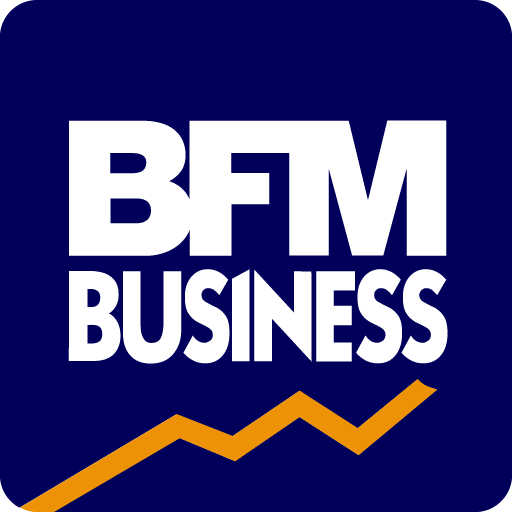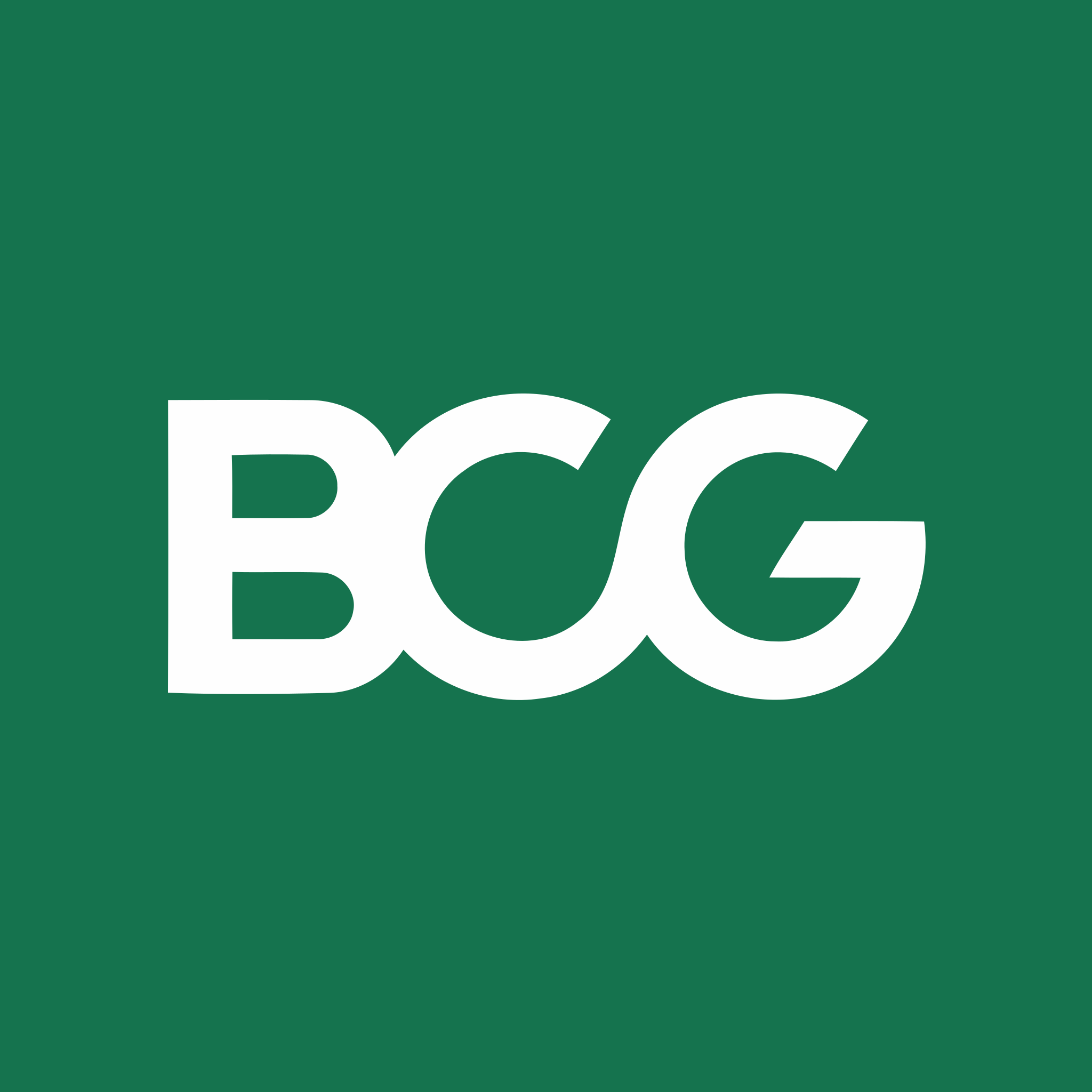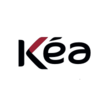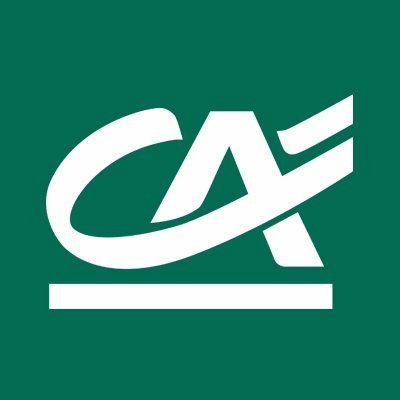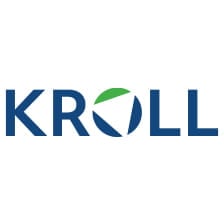Summary of our market study
The French cement market is estimated at €4 billion.
The global cement market, valued at around $330 billion and over 4 billion tonnes, is expected to reach $486 billion by 2029
The market is strongly dominated by China, with over 50% of world production.
The market is highly concentrated and dominated by a few players.
The French cement market encompasses the manufacture and distribution of hydraulic binders used in the construction of various forms of concrete structures.
The market is an oligopoly of a few companies: Lafarge-Holcim, Ciments Calcia (Heidelberg groupe), Cemex, Vicat, Imerys and Eqiom. Cement manufacturing is one of the most capital-intensive sectors of the industry. In France, cement producers generate sales of around 3.5 billion euros. Production varies between 16 and 18 million tonnes.
Cement is essential to the construction sector, with a market share of almost 50% in single-family homes and over 75% in multi-family housing and tertiary buildings.
The French market is experiencing a trade deficit. France's main cement suppliers are Spain, Belgium and Algeria, and the trade balance has deteriorated from 31.3% to 18.2%.
The main application for cement in France is ready-mix concrete, which accounts for 60% of use.
Construction and public works are the main end markets. 62.8% of sales in the concrete sector are generated by the building industry.
Leading players in the French cement industry
- LafargeHolcim: undisputed leader in the French cement sector.
- Heidelberg Cement, world leader with a presence in France with Ciments Calcia.
- Cemex, a multinational of Mexican origin
- Vicat: the last independent French cement manufacturer.
- Imerys Aluminates: Specializes in undifferentiated forms of cement such as calcium aluminate cements
- Eqiom: subsidiary of the global CRH group
- Hoffman green, producer of "green" cement
to understand this market
Detailed content of our market study
 Inforamtion
Inforamtion
- Number of pages : 35 pages
- Format : Digital and PDF versions
- Last update :
 Summary and extracts
Summary and extracts
1 Market overview
1.1 Definition and scope of study
Cement is a hydraulic binder used in the manufacture of concrete for slabs, blocks, plasters and mortars. Cement is manufactured by heating a finely ground mixture of limestone, clay and sand to temperatures of up to 1,450°C. This stage results in what is known as clinker, an intermediate product in cement manufacture, which is then cooled and finely ground to produce the powder we call cement.
This is an oligopolistic sector made up of just a few leading cement manufacturers: Lafarge-Holcim, Ciments Calcia Heidelberg, Vicat, Imerys and Eqiom. Heavy initial investment and the need to reach critical size are the main barriers to market entry, making this one of the most capital-intensive activities in the industry.
Worldwide, the market is growing, driven in particular by Chinese production and consumption in emerging countries. China is the world's leading cement producer, accounting for over 50% of global output. It is followed by India, responsible for 8% of global production. Cement is the second most consumed product in the world after water, as it is essential for the construction of concrete. In 2020, the global cement market was worth over 18 million tonnes, and is expected to record a CAGR of over 3% over the next 5 years.
By 2022 in France, cement will account for no less than 50% of the market share for single-family homes and over 75% for multi-family housing and tertiary buildings, with the main outlet being construction, followed by public works. However, a rebound seemed to be in the offing since 2016 and until the Covid-19 crisis, driven by growth in the construction market.
As cement is difficult to transport, production sites are generally located close to consumption points, and the majority of distribution is handled by producers who have integrated the entire value chain.
Last but not least, the cement industry is a cause for concern today, as it is highly polluting. Changing regulations and the forthcoming reduction in CO2 emission quotas are forcing producers to reinvent themselves and develop greener cement. The signing of an industry green deal in 2016 confirmed the efforts that industry players were willing to make in this direction. What's more, the growth in energy renovation, which is driving the construction sector, points to growth prospects for years to come. The 7.5-billion-euro economic stimulus plan for the construction industry, introduced by the government after the Covid-19 crisis, has also boosted demand for cement since then.
1.2 The world cement market largely dominated by China
The global cement market has been valued at $***.* billion in ****, and is expected to reach $***.* billion in **** at a CAGR of *.*% during this period. [***]. Asia Pacific accounts for **% of the global market.
Cement sales projections World, ****-****, in billions of US dollars Source: ****
According to Cembureau, the European Cement Association, *.* billion tonnes of cement were produced worldwide in ****. China produced nearly *.* billion tonnes of cement in ****, far ahead of the rest of the world. In terms of cement production, the EU-** ranked third.
World cement production by country World, ****, in million tonnes Source: ****
China is the world's leading producer, with **.*% of output. It is followed by India and the United States.
China's growth in cement began in the ****s, with the development of a market economy and the disappearance of small, locally-based producers in favor of large, integrated companies. The Chinese government strongly encouraged this market consolidation, which led to the emergence of market leaders. China has been the world's leading producer for over ** years. Exports represent only a small percentage of this market, and the majority of production is destined for domestic use. Doubts have therefore arisen as to the veracity of the figures declared by China which, despite its ...
1.3 French market at half-mast
The French cement market suffered a sharp decline between **** and ****, before beginning to recover in ****. In ****, cement producers' sales will reach *.** billion euros, a higher level than in ****.
Sales trends for cement manufacturers France, ****-****, in billions of euros Source: ****
Cement producers' sales therefore fell by **.*% between **** and ****, mainly due to the drop in demand from construction industry players, undermined by the fall in their market. In ****, producers saw their revenues increase by *%, before a slight decline in ****. This increase was mainly due to growth in the construction sector. Finally, sales growth over the period ****-**** is over **%.
1.4 A trade deficit for French cement
Exports and imports of cement in France can be obtained using the international customs code **** on the UN Comtrade platform. This code covers all Portland cements, aluminous cements, slag cements and phosphate cements.
We note that exports fell by almost **% between **** and ****, with a significant drop in ****. This drop could be explained by a decline in international trade during the global pandemic, and by the recovery of activity in the construction sector, which was more significant in **** due to the shutdown in ****, forcing France to keep its cement production for itself.
In ****, the value of exports is USD ***.* million.
cement export trends France, ****-****, in millions of euros Source: ****
Imports, on the other hand, increased by **% between **** and **** , reaching ***.* million euros.
cement import trends France, ****-****, in millions of euros Source: ****
The sharp drop in exports relative to imports has therefore led to a deterioration in the French trade balance and in the coverage rate, which has fallen from **.*% in **** to **.*% in **** . This reality reflects the decline of the French market and French production in relation to other countries such as China and India, whose growth since the ****s has made them hegemonic leaders.
Main destination countries for French cement exports France, ...
1.5 The impact of Covid-19 on the market
sales index for cement manufacturers France, ****-****, base *** **** Source: ****
The Coronavirus has had a major impact on the French cement market, with manufacturers' sales index falling from ***.* in February **** to **.* in April, a reduction of almost half. This fall is mainly due to the closure of construction sites, which has brought French cement's main outlet to a standstill. As a result, the sector is set to suffer a fall of **% over the full year **** compared with ****.
As the graph shows, manufacturers have yet to return to their pre-crisis sales levels. However, manufacturers are counting on the government's economic stimulus plan to bolster the construction sector. This is expected to boost demand for cement.
2 Demand analysis
2.1 Concrete, the main application for French cement
The main use made of cement is ready-mix concrete (***), which, as its name suggests, can be used directly on the building site. This implies that it is manufactured in a fixed concrete plant. Industrial concrete, which includes processed concrete-based products, accounts for **% of cement use.
Concrete therefore accounts for **% of cement demand in France.
Next come cement wholesalers such as NGM, which account for **% of cement consumption.
DIY superstores account for just *% of cement demand. **% of the market is therefore made up of professionals.
Cement consumption by user sector France, ****, in percent Source: ****
It can be seen that the cement market has broadly followed the same trend as that of ready-mix concrete, which after * years of decline between **** and **** has begun a rebound since ****. [***]
trends in ready-mix concrete production France, ****-****, in millions of m* Source: ****
2.2 A market driven by construction and public works
Construction and public works are the two main end markets for cement.
According to the Fédération de l'Industrie du Béton, **.*% of sales in the concrete sector are generated by the building industry, compared with **.*% by the public works sector. These two markets are the main users of cement, not only for concrete, but also through traders who sell their cement to construction companies. They therefore determine growth.
Breakdown of concrete market sales France, ****, in percent Source: ****
The building market
French production in the building sector will grow by *.*% in ****, virtually canceling out the negative effects of the pandemic, according to the Fédération Française du bâtiment. As a result, ***,*** housing units will be built in ****, **,*** more than the long-term average.
Since ****, the construction industry has seen strong growth after several years of decline. The construction sector was hit hard by the **** crisis, with sales of new homes plummeting by **.*% in **** alone. [***]
Since ****, however, a slow recovery has begun. The construction industry grew by *.*% in volume in ****. [***] This growth can be explained in part by the development of the energy renovation market, the increase in the number of real estate programs and the growing interest of ...
2.3 Cement consumption across the country
Cement consumption is highest in the North-West (***), with **% of total consumption. conversely, the North-East accounts for only **% of French consumption. The South-East accounts for **% and the South-West for **%.
Cement consumption by region ****, France, in percent Source: ****
This corresponds to the distribution of companies in the construction sector, since an estimated **.*% of the sector's employees are located in the Île-de-France region. A further **.*% are located in the Auvergne-Rhône-Alpes region. [***]
3 Market structure
3.1 The market value chain
The cement production and distribution value chain can be broken down as shown above. However, all the industry leaders in France (***) downstream. They also possess efficient transport networks for product delivery.
The majority of distribution is to professionals. Consumers account for just *.*% of cement consumption.
3.2 The rebound in French production since 2016
Cement production declined significantly from the **** crisis until ****, as the sluggishness of construction and public works production had a lasting impact on the sector.
The year ****, which saw an increase in production of almost *%, proved to be a flash in the pan, as production fell back to its **** level by ****.
Cement production trends in France France, ****-****, in million tonnes Source: ****
However, production has been on the rise since **** (***), thanks to the upturn in the construction market, which is boosting demand for cement and prompting producers to increase their production volumes. It will reach **.* million tonnes in ****.
The sector's salaried workforce (***), reaching *,*** employees in ****.
Employees in the sector France, ****-****, in thousands Source: ****
The Auvergne-Rhône-Alpes region has the most employees in cement manufacturing (***).
Source: ****
3.3 A highly concentrated market
The French cement market is highly concentrated, and INSEE counted just ** producers on the market in ****.
number of cement production companies France, ****-**** Source: ****
Moreover, the majority of production is controlled by five main players: LafargeHolcim, the sector leader, Calcia-HeidelbergCement Group, Imerys Aluminates, Eqiom Groupe CRH and Vicat.
Vicat is even the last independent French cement manufacturer since the merger of the Lafarge Group with Switzerland's Holcim in ****.
Breakdown of cement plants and grinding centers France, ****, in percent Source: ****
According to URSSAF, there will be ** cement and grinding plants in France in ****. Of these, ** belong to LafargeHolcim, * to Ciments Calcia HeidebergCement Group and * to Vicat.
The main reason for this concentration is the barrier to entry represented by the initial costs of entering the market. Indeed, to be profitable in this sector, it is important to reach a critical size very quickly in order to recoup investments in production infrastructure, as well as high transport costs.
However, some smaller players are trying to make their mark in cement manufacturing. Such is the case of Cem'In'EU, which plans to set up eight plants in Europe, each with a production capacity of €***,***. While these figures may seem derisory compared with the industry leaders, ...
3.4 Cement distribution mainly internalized
The major French cement producers have internalized distribution to control costs. The main cement distribution channel is direct delivery by the manufacturers, who have a network of storage and supply platforms throughout mainland France.
Calcia Ciments, for example, has its own transport company (***). [***]
However, this distribution method is impossible in Corsica, where supplies are more complicated. In fact, it led to an agreement between cement producers Lafarge and Vicat and the GIE grouping together the merchant-distributors of Haute-Corse. This agreement gave the GIE exclusive rights to operate (***). Lafarge and Vicat were fined ** and *.* million euros respectively in ****. [***]
However, part of the production is also distributed through traders such as Bigmat, Europe's leading chain of independent builders' merchants.
Finally, the last players in cement distribution are DIY superstores, which sell bagged cement to private individuals for their own DIY projects. However, this distribution method accounts for only *% of total cement consumption[***]
4 Offer analysis
4.1 Portland cement, the market's leading product
There are different types of cement, each with its own specific characteristics.
Cement typology France, ****, as a percentage of production Source: ****
Portland CEM II cements are the most widely used, accounting for **% of production. They result from the blending of clinker in quantities of at least **% and other constituents such as blast-furnace slag, fly ash, pozzolans and silica fume. They are used for masonry and reinforced concrete work. They can be used for massive structures requiring a moderate temperature rise. [***] Next come Portland CEM I cements, which account for **% of production. They contain at least **% clinker and no more than *% secondary materials. They are mainly used for reinforced and prestressed concrete (***). They are rarely used for solid structures, due to their heat of hydration, which can lead to excessive temperatures during production. Hydraulic cements include CEM III and CEM V. They are suitable for hydraulic and underground works, foundations and injections; for works in aggressive waters: sea water, selenite water, industrial water and pure water; for massive structures: foundations and dams; and for works in agricultural environments: storage, silage and slurry pits. White cements are used for their white color obtained from pure materials such as limestone and kaolin. It is ...
4.2 French cement producer prices
The Producer Price Index measures the change in prices of products as they leave the factory. For French cement, it rose slowly between September **** and September ****, from *** to ***.*, an increase of *.*%. Since ****, the price index has grown exponentially, reaching ***.* in January **** and ***.* in January ****. This is explained by the sharp rise in energy prices due to the war in Ukraine, as this industry is highly energy-dependent.
French cement producer price index France, ****-****, Base *** September **** Source: ****
Producers have been forced to pass on the cost of raw materials in their prices. Indeed, raw materials, mainly limestone, clay and sand for cement production, have seen their prices rise in recent years.
producer price trends for industrial limestone, gypsum and chalk on the French market France, ****-****, Index base *** in **** Source: ****
producer price trends for sands, aggregates, clays and kaolins on the French market France, ****-**** Source: ****
We can see that the cost of raw materials has risen between **** and ****, pushing up prices. Indeed, industrial limestone, gypsum and chalk saw their cost rise by **% between January **** and January ****, and sands, clays, aggregates and kaolins by **.*%.
4.3 Eco-responsible cement
Cement production is one of the most polluting industries in France, accounting for *.*% of CO* emissions. [***]
With the new CO* emission standards introduced by the European Union, cement manufacturers are gradually being forced to reduce their ecological footprint. From **** onwards, the European Union will be reducing free emissions quotas, and the particularly polluting sector would be heavily impacted if it did not adopt the path of ecological transition.
Accordingly, French cement manufacturers are forecasting a **% reduction in CO* emissions from cement production between **** and ****, in order to continue the decarbonization trajectory already underway since the early ****s.
Evolution and projection of CO* emissions in the cement sector France, ****-****, in kg CO*eq / tonne of cement Source: ****
France's main cement producers are therefore investing in research and development to find less polluting manufacturing solutions.
One way is to take advantage of the fact that concrete recarbonizes over time. In fifty years, a concrete building reabsorbs **% of the carbon released during the curing process. While this in no way offsets the pollution caused by the industry, some companies have turned their attention to this phenomenon in order to speed it up. LafargeHolcim has used the FastCarb solution to recover cement plant emissions ...
5 Regulations
5.1 Cement industry regulations
Quarry regulations
Law no. **-* of January *, **** on quarries. A departmental quarry plan defines the conditions under which quarries may be set up within the department, and an impact study and public inquiry must be carried out before quarries are opened. Finally, quarry operators are required to provide a financial guarantee to ensure site surveillance and safety. In addition, quarries are no longer subject to the Mining Code, but rather to the Code governing facilities classified for environmental protection. [***]
Regulations on pollution from cement plants
The decree of May *, **** on cement plants governs all types of pollution likely to be generated by them.
Atmospheric pollution: Cement plants must measure their emissions of dust, sulfur oxides and metals so as not to exceed set thresholds (***). Manufacturers are also required to install dust removal and filtering systems. Water pollution: The decree sets maximum levels for water flow and discharge of materials into water. It obliges manufacturers to take the necessary measures to limit soil and water pollution. Waste produced by the plant and not recycled on or off site is disposed of in authorized classified facilities. Preventing noise pollution: facilities must be built, equipped and operated in such a way that their operation ...
6 Positioning the players
6.1 Segmentation
- Heidelberg Cement
- Vicat Groupe
- Imerys
- CRH
- BigMat
- Leroy Merlin France (Adeo)
- Lafarge (Holcim Groupe)
- Hoffmann Green Ciment
- Ciments Calcia (Heidelberg group)
- Colacem SPA
- EQIOM Bétons (CRH Group)
- Ciments du Maroc (Heidelberg Group)
- Holcim
- Carrières du Boulonnais - CB Groupe
- Chryso (Saint-Gobain Groupe)
- GCP Applied technologies (Saint-Gobain Groupe)
- Ecocem
- Ciments Calcia
- Ecocem France
- Eqiom
- Holcim Haut Rhin
- Imerys Aluminates
All our studies are available online in PDF format
Take a look at an example of our research on another market!
 Choosing this study means :
Choosing this study means :
Access to more than 35 hours of work
Our studies are the result of over 35 hours of research and analysis. Using our studies allows you to devote more time and added value to your projects.
Benefit from 6 years' experience and over 1,500 industry reports already produced
Our expertise enables us to produce comprehensive studies in all sectors, including niche and emerging markets.
Our know-how and methodology enable us to produce reports that offer unique value for money.
Access to several thousand articles and paid-for data
Businesscoot has access to all the paid economic press as well as exclusive databases to carry out its market research (over 30,000 articles and private sources).
To enhance our research, our analysts also use web indicators (semrush, trends, etc.) to identify market trends and company strategies. (Consult our paying sources)
Guaranteed support after your purchase
A team dedicated to after-sales service, to guarantee you a high level of satisfaction. +44 238 097 0676
A digital format designed for our users
Not only do you have access to a PDF, but also to a digital version designed for our customers. This version gives you access to sources, data in Excel format and graphics. The content of the study can therefore be easily retrieved and adapted for your specific needs.
 Our offers :
Our offers :
the cement market | France
- What are the figures on the size and growth of the market?
- What is driving the growth of the market and its evolution?
- What is the positioning of companies in the value chain?
- Data from several dozen databases
Pack 5 études (-25%) France
- 5 études au prix de 74 €HT par étude à choisir parmi nos 1200 titres sur le catalogue
- Conservez -25% sur les études supplémentaires achetées
- Choisissez le remboursement des crédits non consommés au terme des 12 mois (durée du pack)
Consultez notre catalogue d’études sectorielles











